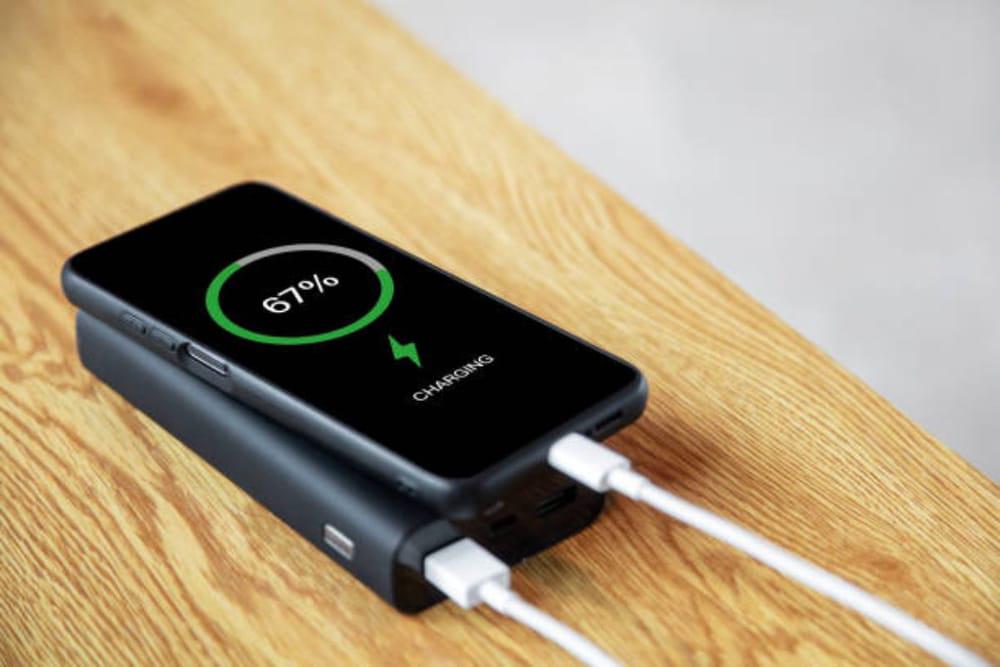Emirates Bans Use of Power Banks Onboard Flights From October 1, 2025

New Delhi | October 1, 2025 In a major policy change aimed at enhancing passenger safety, Emirates Airlines has announced that the use of power banks onboard its flights is strictly prohibited starting October 1, 2025. While passengers may still carry one power bank under prescribed limits in their hand baggage, they will no longer be allowed to use the device to charge phones, tablets, or other gadgets during the journey. The airline explained that the decision follows a comprehensive safety review, citing a sharp rise in lithium battery-related incidents across the aviation industry in recent years. What the New Rule Means Under the updated regulation, passengers may carry only one power bank with a maximum capacity of 100 watt-hours (Wh), equivalent to about 27,000 milliamp-hours (mAh). However, the device must remain unused throughout the flight. Travellers are also barred from recharging power banks using the aircraft’s in-seat charging system. According to Emirates, all accepted power banks must display their capacity rating clearly and should only be stored in the seat pocket or under the seat in front, not in the overhead bin. The airline further advised passengers to fully charge their electronic devices before boarding, especially for long-haul journeys, as aircraft charging ports may not be available on all seats or may have restrictions. Why the Ban Now? “After a detailed safety evaluation, Emirates has taken a proactive step to limit risks associated with the use of lithium battery-powered power banks onboard flights,” the airline said in a statement. The airline pointed out that the increasing number of passengers travelling with power banks has corresponded with a noticeable rise in mid-air safety incidents linked to overheating, swelling, or fire hazards caused by defective lithium batteries. Understanding Existing Rules Globally, regulations on carrying power banks have existed for years. Passengers are required to carry them in hand baggage only, not checked-in luggage, due to the potential fire risk. Most airlines, in line with IATA (International Air Transport Association) standards, allow power banks up to 100 Wh without prior approval. Some airlines permit up to 160 Wh units with special permission, but devices exceeding that capacity are banned outright. The FAA (Federal Aviation Administration) and other international regulators already recommend these limits, but airlines like Emirates are now imposing stricter in-flight usage rules to reduce risks. Industry Trends Emirates is not alone in tightening policies. In recent months, carriers such as Cathay Pacific, Singapore Airlines, EVA Air, Thai Airways, and several South Korean and Chinese airlines have announced stricter measures on power banks. While these restrictions may cause inconvenience for frequent flyers, experts say they highlight a growing consensus in the aviation sector that lithium battery risks cannot be ignored. Passenger Tips If you are travelling with a power bank, ensure: It is for personal use and under 100 Wh capacity. It shows no signs of damage, swelling, or overheating. It remains unused throughout the journey, in line with Emirates’ updated rules. With this policy, Emirates aims to strike a balance between convenience and safety, ensuring passengers remain connected while keeping in-flight risks under control. Emirates Bans Use of Power Banks Onboard Emirates has announced a new safety regulation effective October 1, 2025, prohibiting the use of power banks during flights. Passengers may still carry one power bank under 100 watt-hours in their cabin baggage, but it must remain unused throughout the journey. The airline explained that the move comes after a rise in lithium battery-related incidents across the aviation industry. Travellers are advised to fully charge their devices before boarding and rely on in-seat charging ports if needed. All accepted power banks must display clear capacity ratings and be stored under the seat or in the seat pocket.




